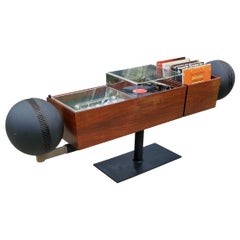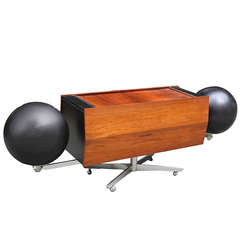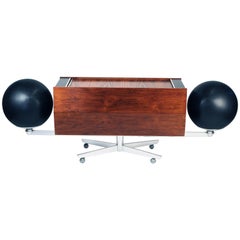Clairtone Project G
Vintage 1960s Canadian Mid-Century Modern Musical Instruments
Aluminum
Recent Sales
Vintage 1960s Canadian Mid-Century Modern Musical Instruments
Mid-20th Century Canadian Mid-Century Modern Cabinets
Vintage 1960s American Mid-Century Modern Credenzas
Stainless Steel
Vintage 1960s Canadian Musical Instruments
Metal
Mid-20th Century Canadian Mid-Century Modern Commodes and Chests of Drawers
Stainless Steel
Mid-20th Century Canadian Mid-Century Modern Cabinets
Stainless Steel
Mid-20th Century Canadian Mid-Century Modern Cabinets
Rosewood
Mid-20th Century Canadian Musical Instruments
Aluminum, Steel
Vintage 1960s Canadian Mid-Century Modern Sideboards
Aluminum
Mid-20th Century Canadian Musical Instruments
Aluminum
Vintage 1960s Canadian Mid-Century Modern Credenzas
Chrome
Vintage 1960s American Mid-Century Modern More Furniture and Collectibles
People Also Browsed
21st Century and Contemporary French Modern Wall Lights and Sconces
Alabaster, Steel
2010s Unknown Modern Side Chairs
Velvet, Ash, Bentwood
Vintage 1960s Italian Mid-Century Modern Flush Mount
Metal, Nickel
20th Century American Books
Paper
Vintage 1970s Italian Mid-Century Modern Lounge Chairs
Leather, Fiberglass
Vintage 1960s Italian Mid-Century Modern Wall Lights and Sconces
Aluminum, Brass
21st Century and Contemporary American Modern Candle Sconces
Stainless Steel
Vintage 1960s Italian Mid-Century Modern Sofas
Leather
2010s American Ottomans and Poufs
Fabric
Vintage 1950s Danish Scandinavian Modern Lounge Chairs
Fabric, Oak
Antique Late 19th Century English Late Victorian Sterling Silver
Silver, Sterling Silver
Vintage 1920s English Dinner Plates
Porcelain
Vintage 1970s Italian Sofas
Steel
Vintage 1970s Italian Wall Lights and Sconces
Iron
Vintage 1940s American Mid-Century Modern Sofas
Fabric, Wood
Mid-20th Century American Mid-Century Modern Side Chairs
Wicker
Vintage Clairtone Project G Stereo System for Sale
Sleek, sculptural and impossibly alluring, the Clairtone Project G, a modular Space Age–style stereo system, was a big hit for the audiophiles of yesteryear. Manufactured during what we now know as the era of mid-century modernism, a console stereo such as the Clairtone Project G encased in exotic dark woods might have been the centerpiece of your (sunken) living room. Frank Sinatra and Playboy magazine founder Hugh Hefner were big fans of the system when it debuted in 1964, and today, Lebron James owns a vintage Project G.
At nearly seven feet in length and resting on a solid aluminum swivel base, the Project G stereo was introduced by an electronics company called Clairtone Sound Corporation Limited, in Toronto, Canada, in 1964. It was designed by Hugh Spencer and features a turntable and receiver inside a comely Brazilian-rosewood cabinet that mirrors the celebrated case pieces crafted by the day’s Scandinavian modernists.
Positioned on either side of the console — and markedly, outside the cabinet, which was revolutionary at the time — are oversize satellite-like sphere-shaped speakers made of spun aluminum. With rotating capability, the speakers promise state-of-the-art sound during any kind of party. The experience came with a hefty price tag, so Clairtone introduced a less expensive iteration — the Clairtone Project G2 — in 1966.
Although fewer than 400 models were manufactured, the Clairtone Project G was featured in Time magazine and won a silver medal at the 1964 Milan Triennale. Vintage audio lovers also don’t need to look too closely to find Project G series models in films such as The Graduate and Zabriskie Point.
Find a vintage Clairtone Project G stereo and other 1960s stereo consoles today on 1stDibs.


